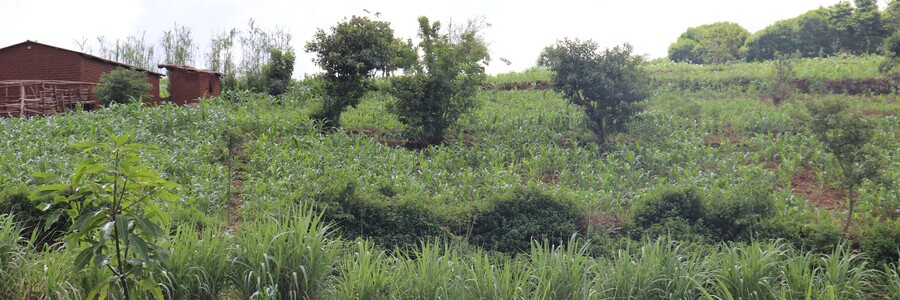From the Dynamic Agroforest...
Dynamic Agroforestry, together with the Nafagaz digester, forms an efficient cycle that transfers energy and nutrients from one to the other. Thus, the Dynamic Agroforestry cultivation method produces biomass in the form of crop residues or wood waste. At the same time, farmers plant trees on their DAF plots, among others, whose wood they can later use for their own needs. The biomass produced by the Dynamic Agroforestry thus represents an optimal supplement to the Nafagaz, the biomass can be used as an energy supply to heat the Nafagaz stoves.
...to the Nafagaz...
However, the Nafagaz stove can be used not only for heating and cooking, because at the same time to generate energy, the stoves produce vegetable charcoal. For this purpose, branches and logs from the Dynamic Agroforest are placed in a side opening of the Nafagaz stove and lit. In the combustion chamber of the digester, wood substances such as lignin and cellulose are only partially burned during the combustion process. The result is vegetable charcoal.
...and back again
The plant charcoal produced when the Nafagaz is used can now be fed back into the Dynamic Agroforestry: By incorporating the plant charcoal into the soil, it becomes more nutrient-rich, and the harvest is stabilized and increased. In addition, thanks to soil improvement, the use of chemical fertilizers or pesticides can be limited - a benefit not to be sneezed at, which protects nature, animals and people alike.
Dynamic agroforestry, nafagaz and plant charcoal
To summarize: The combination of Dynamic Agroforestry, the Nafagaz digester and the resulting plant charcoal has immense benefits.
Thus
- species-rich edible forests with high biomass production and CO2 storage are created
- CO2 emissions are reduced and local forest remnants are protected
- infertile land is transformed into green paradises and carbon is stored in the soil for the long term.
Support the project

